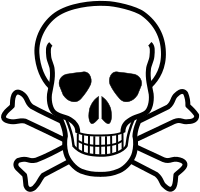Pirates' House
.jpg)
The Pirates' House is a historic restaurant and tavern established in 1753 located in downtown Savannah, Georgia in the Southern United States. A portion of the structure was built in 1734, making it the oldest standing building in the state of Georgia.[1][2] The modern restaurant was founded by Herb Traub and Jim Casey in 1953,[3] and is one of Savannah's most-popular tourist attractions.[4]
History
The Pirates' House was built on a plot of land located on the east side of James Oglethorpe's original plan of the city of Savannah. The plot of land was assigned to become a botanical garden that modelled the Chelsea Botanical Garden in London, England. The garden was dedicated to Oglethorpe's Trustees. Oglethorpe recruited botanists from around the world to acquire plants for the project such as cotton, spices, indigo, and medicinal herbs. The garden was hoped to bring success in the wine and silk industries, and was centered on growing mulberry trees. The soil and weather conditions of Georgia were not compatible with the mulberry trees and it was not successful with wine or silk. However, it did distribute peach trees which Georgia is currently renowned for. The garden was also highly successful in growing cotton which later became a staple of Georgia's economy.
A small building which later became the starting structure of the Pirates' House was built on the plot of land in 1734 to house the gardener who worked there. This building was deemed the Herb House and is said to be the oldest building in the state of Georgia (see List of the oldest buildings in Georgia).
In 1754, the people of Savannah decided the need for the botanical garden was no longer relevant. Savannah was quickly becoming a port town and The Herb House was transformed into an Inn and tavern for seamen visiting from abroad.[5]
The Pirates' House is home to some rare early edition pages of Treasure Island, by Robert Louis Stevenson. The pages can be seen hanging on the walls of the Captain's room and the Treasure room in the Pirates' House.
The current owners of The Pirates' House claim that Captain Flint, a pirate mentioned in the book Treasure Island by Robert Louis Stevenson, died in the upstairs bedroom at the Pirate's House.[5][6] However, as Flint is a completely fictional character, this story cannot be historically true, and the additional claim that Flint haunts the place as a ghost[7] suggests that these claims are not intended to be taken seriously. Moreover, although the novel states that Flint died in Savannah, nothing in it states or suggests that The Pirates' House is the location of his deathbed.
Renovation and ownership
In 1948, the Pirates' House and the surrounding land was acquired by The Savannah Gas Company. The building soon caught the interest of Mrs. Hansell Hilyer, wife of the president of The Savannah Gas Company. She renewed the house museum into the restaurant of present day. The Pirates' House has 15 dining rooms, can hold up to 120 guests and serves a variety of southern dishes.[5] Many of its recipes can be found in "The Pirate's House Cook Book" by Frances McGrath.[8][8]
See also
References
- ↑ McCarthy, Kevin M. Georgia's Lighthouses and Historic Coastal Sites. Pineapple Press, 1998, p. 9.
- ↑ Brown, Alan. Haunted Places in the American South. Univ. Press of Mississippi, 2002, p. 77.
- ↑ "Beneath the Surface - Savannah Magazine". Savannahmagazine.com. 15 March 2017. Retrieved 30 July 2018.
- ↑ Hustmyre, Chuck (13 September 2010). ""The Pirates' House"". Crime and History.
- 1 2 3 "The Pirate's House". Thepirateshouse.com. Retrieved 30 July 2018.
- ↑ "{title}". Archived from the original on 15 January 2010. Retrieved 27 September 2010.
- ↑ "{title}". Archived from the original on 6 October 2010. Retrieved 27 September 2010.
- 1 2
External links
Coordinates: 32°04′42″N 81°05′02″W / 32.07827°N 81.08393°W
